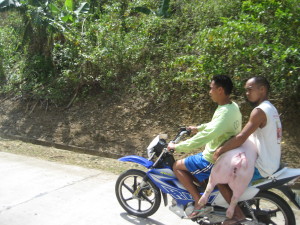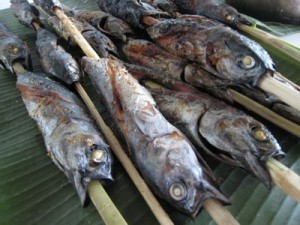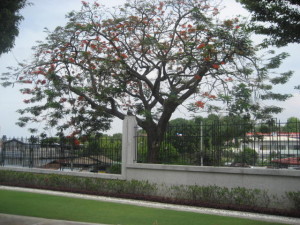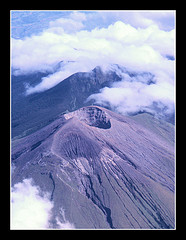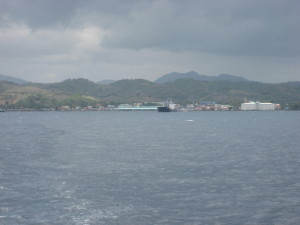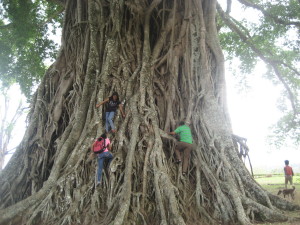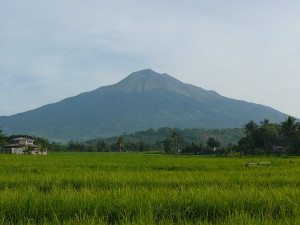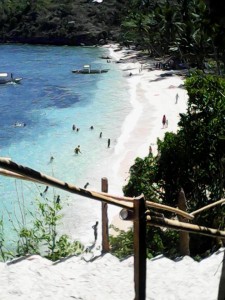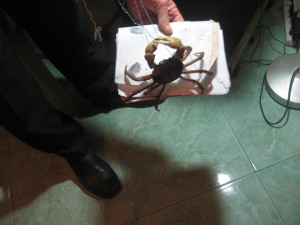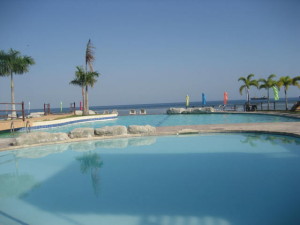March 7, 2014
Do you want to take Manipis Road back to Toledo? It is the oldest road in Cebu.
Is it open now?
Yes, but it is rough.
Is it rougher than the road to Casoy?
No.
Let’s try it. We may not pass this way again.
Then you need to take the road on the right side of the overpass.
Elder Hall took the turn. The road wound past houses and tindahans before beginning the climb along the edge of a steep ravine.
Within 12 kilometers (7.4 miles), the Manipis Road climbs to 490 meters (1,620 feet) above sea level. So at points, there are 250-meter (830-foot) sheer drops to the level below.
The original road was about 3 meters (10 feet) wide. The construction you see is to widen the road.
This road looks like an Idaho mountain road.
The 46-kilometer Cebu-Toledo Road was one of the most expensive and important public works projects ever carried out by the American colonial government during its first decade in the Philippines. Blasting of the mountains and construction of the road began on June 1, 1905 and was finished in 1909 at the cost of about P2 million (in 1909 prices). It was finished by the future mayor of Baguio, Eusebius James Halsema, consulting engineer of the Bureau of Public Works. It was his first project in the Philippines, a baptism of fire for him. Its construction cost was second only to the Zigzag or Kennon Road in Baguio. Both were started almost at the same time and both often crumbled at certain sections during typhoons and were quickly repaired thereafter.
It was, and still is, one of the most beautiful mountain roads in the country.
In the early days of Toledo City, the only way to Cebu City was passing through the rough mountainous terrain of Manipis Road. Sometime in 1938, a Japanese firm opened a copper mine in Lutopan (Brgy. Don Andres Soriano) known as Lutopan Copper Mines. This was abandoned in the advent of World War II. Its mining rights were purchased by Soriano a Cia in 1953 and since then has been renamed as Atlas Consolidated Mining and Development Corporation, once acclaimed as the biggest copper mines in the Far East. A sister corporation was established in 1958 called the Atlas Fertilizer Corporation at Sangi, Toledo City. This was the second fertilizer plant in the Philippines.
In the 1980’s, the South Coastal Road (SCR), which passes through the South Road Properties (SRP)., was completed, The SCR starts at the area near Pier I in Cebu City, follows the eastern line of the SRP, enters Talisay City and ends at the point when it merges with the old highway to the south in Lawaan, Talisay. The Naga-Toledo Road branches from the old highway, providing a southern route from Cebu to Toledo.
In the 90’s, another governor opened an ambitious third link. Gov. Lito Osmeña caused the construction of an otherwise inconceivable avenue. He practically sculptured roads out of mountain sides. To avoid circuitous ways, he connected lower mountains peaks with massive earth movements. By building the trans-central highway, Gov. Osmeña linked Cebu City and Toledo City via the town of Balamban. Although longer compared to the two earlier road ways, some travelers started using it because first it offered some breath taking views and besides, the concrete pavement was so wide. The road expedited the development of shipyards in Balamban.



